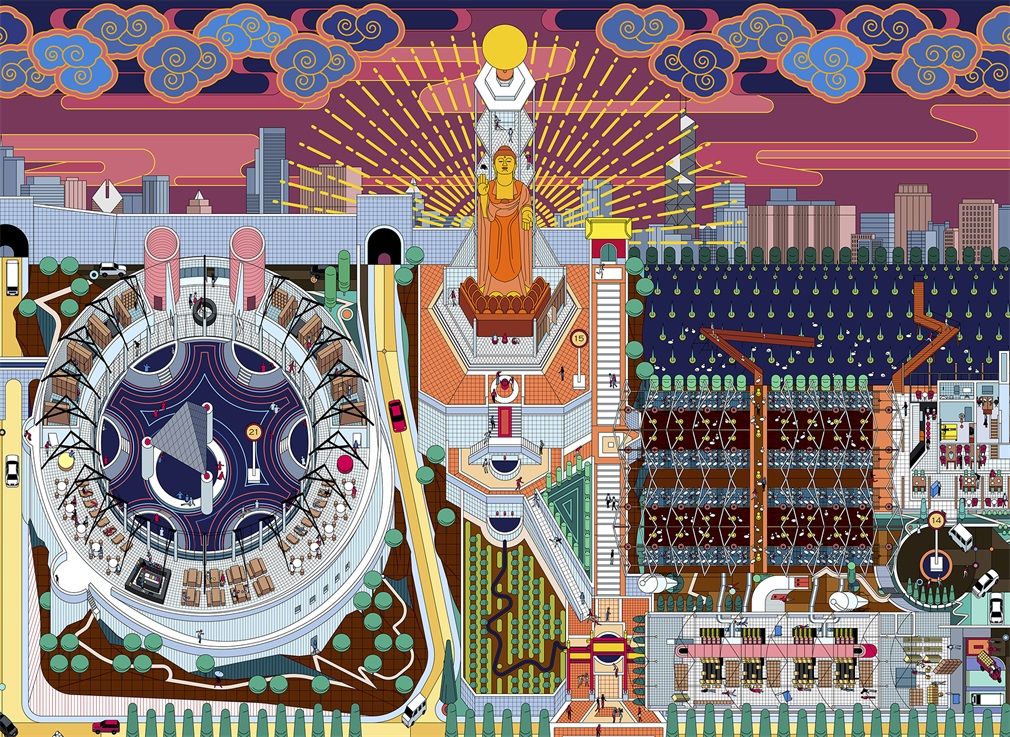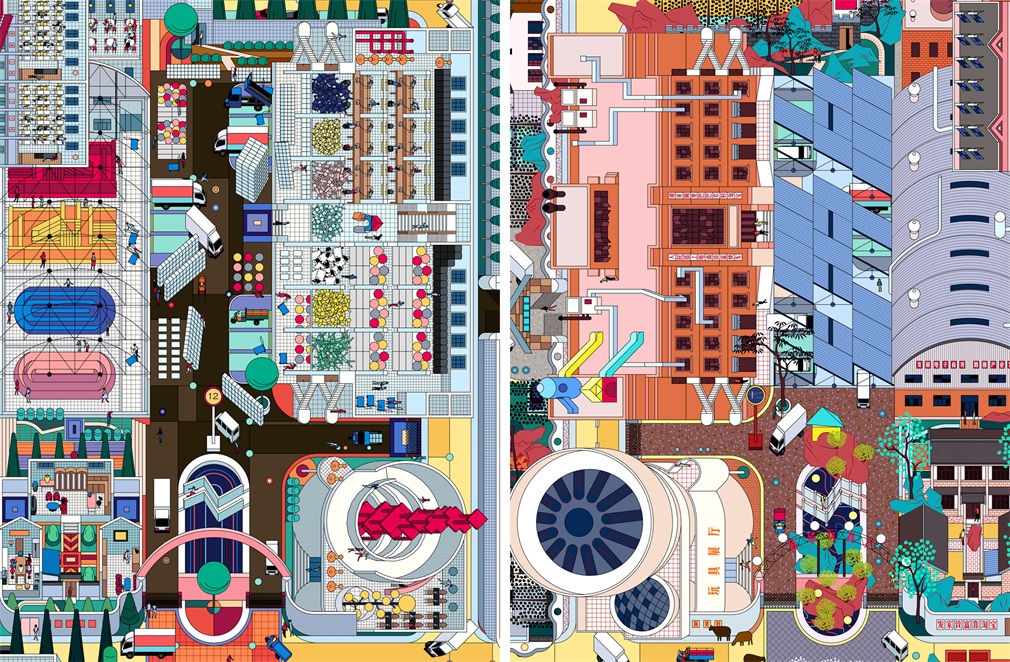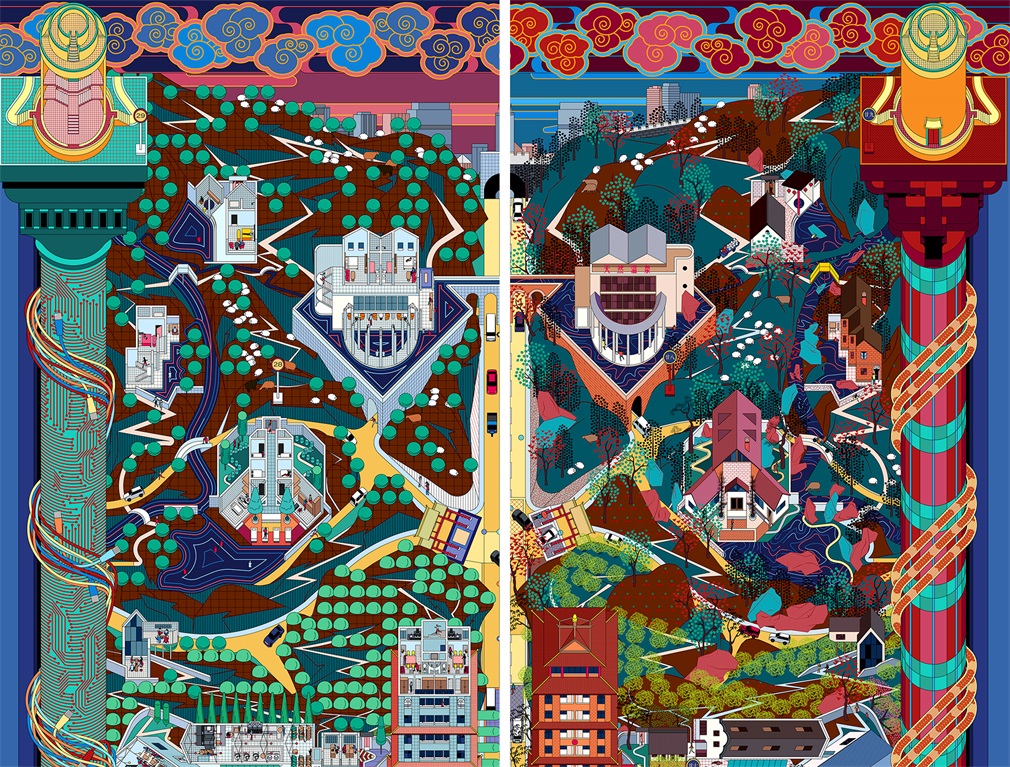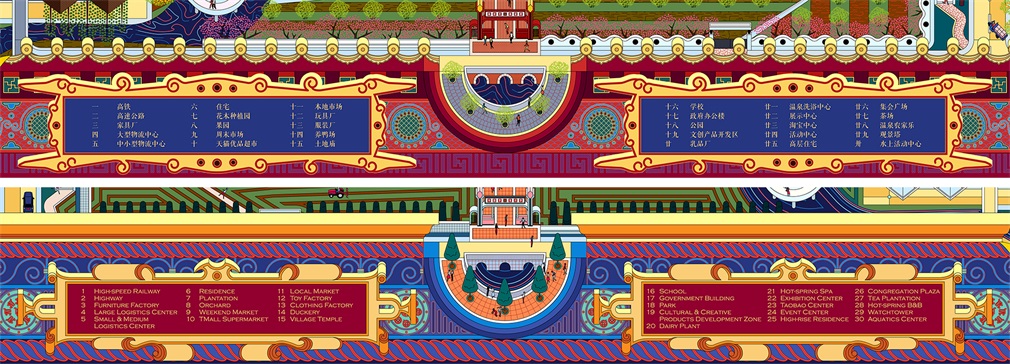Project Team Li Han / Hu Yan / Zhang Xintong / Ji Jiawei / Liu Liyuan / Yuan Ruizhe / Ye Zichen
With the rapid development of the Internet and logistics, Chinese countryside is now tied into urban development. The transformation in the relationship between the city and the countryside is manifested in Taobao Village, a term put forward by AliResearch. Taobao Village functions as both a return to the countryside and a step out of the countryside. As a canonical agrarian utopia in the US, Frank Lloyd Wright’s Broadacre City relates to the Chinese Taobao Village in various aspects despite their fundamental differences. “In the future, the city will disappear.” Such was Wright’s prophecy. Yet, the city and the countryside still exist as two poles of human settlements. However, in contemporary China, the city and the countryside are more than ever connected with each other thanks to the widespread of the Internet. From this perspective, Taobao Village - Smallacre City panorama is a realist critique and Chinese interpretation of Broadacre City.
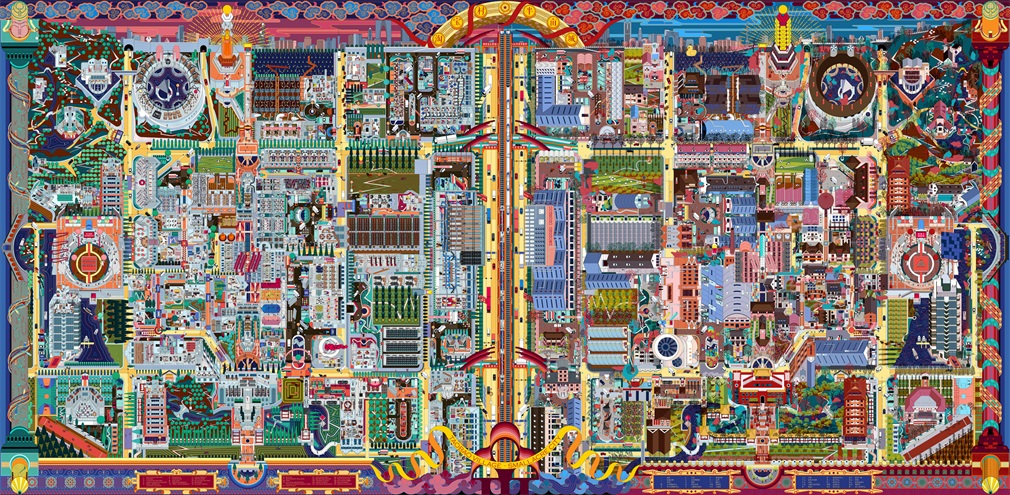
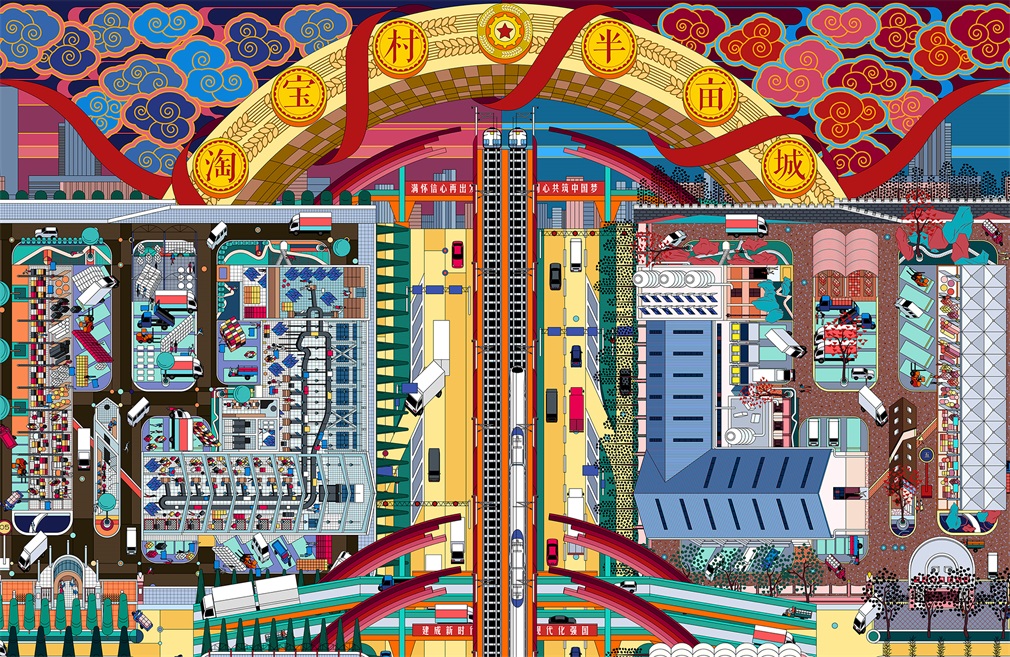
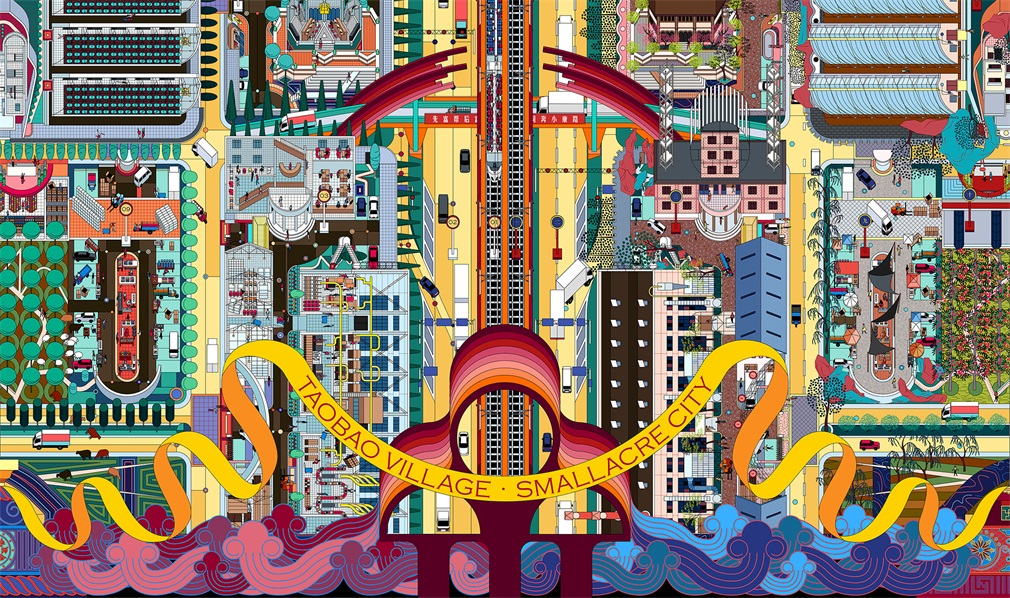
Based on visual materials collected from Taobao Villages, the project presents a figurative Taobao Village and its related facilities based on Wright’s master plan, thus producing a clear connection to the Broadacre City. The road structure and infrastructure layout from the Broadacre City are kept the same and programs from Taobao Villages are added. While the gigantic Broadacre City is measured with the acre, Taobao Village - Smallacre City is planned according to the mu, a unit of land area used in China. The basic planning unit in Taobao Village - Smallacre City is half mu – about 300 square meters. As such, this is also where its name originates.
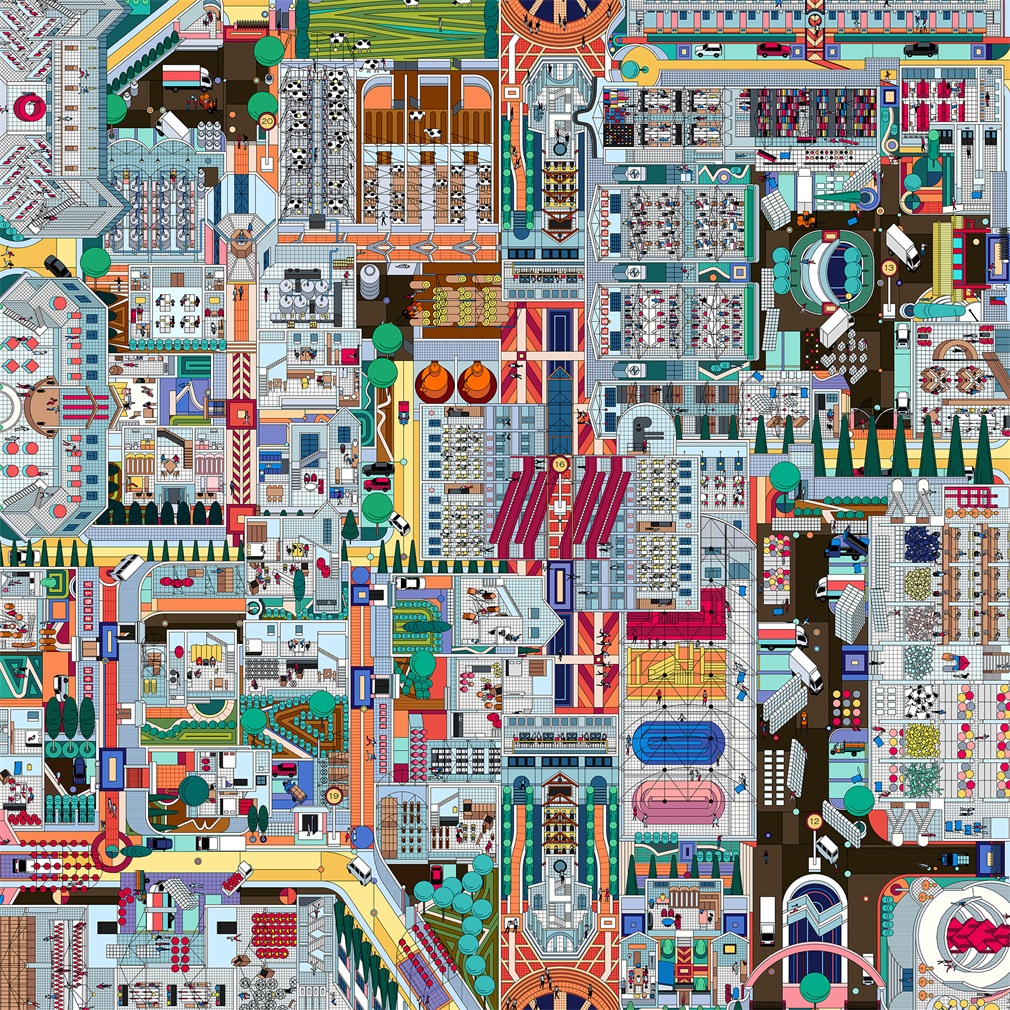
Taobao Village - Smallacre City is composed of two mirrored squares whose program and circulation are identical. The square on the right depicts an exterior scene. With a mixture of Chinese, European, American house styles and simple industrial buildings, it reflects a vernacular desire for architectural styles in the contemporary Chinese countryside. The square on the left depicts an interior scene. With diagrammatic representational techniques, the inner production and consumption logic of Taobao Village is revealed. The different representational techniques used for the exterior and the interior also indicate the dialectical relationships between the global and the local, the physical space and the virtual world.

